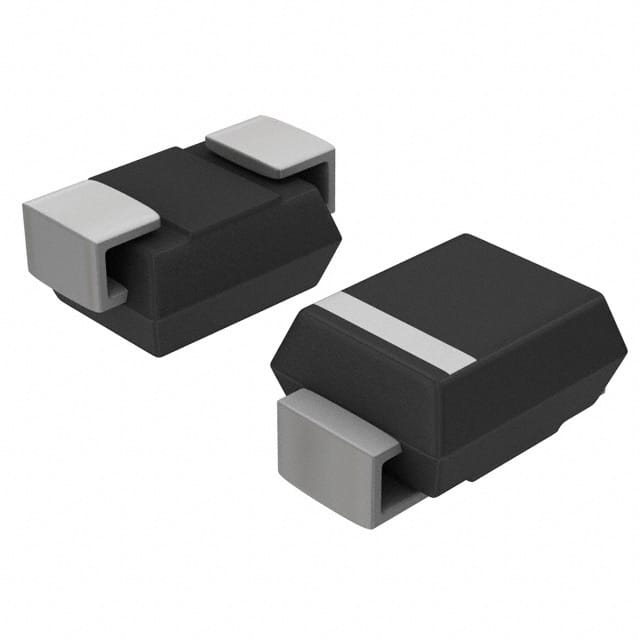Xem thông số kỹ thuật để biết chi tiết sản phẩm.

SK34/TR13 Product Overview
Introduction
The SK34/TR13 is a crucial component in the field of electronics and is widely used in various applications. This entry provides an in-depth overview of the SK34/TR13, including its product category, basic information, specifications, pin configuration, functional features, advantages and disadvantages, working principles, application field plans, and alternative models.
Product Category
The SK34/TR13 belongs to the category of semiconductor devices, specifically within the realm of diodes. These diodes are designed for specific use in electronic circuits and systems.
Basic Information Overview
- Use: The SK34/TR13 diode is primarily used for rectification and switching purposes in electronic circuits.
- Characteristics: It exhibits low forward voltage drop, high current capability, and fast switching speed.
- Package: The diode is typically available in a DO-214AC (SMA) package.
- Essence: Its essence lies in providing efficient rectification and switching capabilities in electronic circuits.
- Packaging/Quantity: The diode is commonly packaged in reels or tubes, with varying quantities based on manufacturer specifications.
Specifications
The SK34/TR13 diode typically adheres to the following specifications: - Forward Voltage: 0.55V - Reverse Voltage: 40V - Forward Current: 3A - Reverse Recovery Time: 75ns - Operating Temperature Range: -65°C to +150°C
Detailed Pin Configuration
The SK34/TR13 diode follows a standard pin configuration: - Pin 1: Anode - Pin 2: Cathode
Functional Features
The key functional features of the SK34/TR13 diode include: - Efficient rectification of AC signals to DC. - Fast switching speed, suitable for high-frequency applications. - Low forward voltage drop, minimizing power losses.
Advantages and Disadvantages
Advantages
- High current capability.
- Fast switching speed.
- Low forward voltage drop.
Disadvantages
- Relatively higher reverse recovery time compared to some alternative models.
- Limited reverse voltage tolerance compared to other diodes in the same category.
Working Principles
The SK34/TR13 diode operates based on the principle of unidirectional conduction, allowing current flow in one direction while blocking it in the opposite direction. This enables efficient rectification and switching within electronic circuits.
Detailed Application Field Plans
The SK34/TR13 diode finds extensive application in various fields, including: - Power supply units - Voltage regulation circuits - Switching power converters - LED lighting systems - Automotive electronics
Detailed and Complete Alternative Models
Several alternative models to the SK34/TR13 diode exist, offering similar functionalities and characteristics. Some notable alternatives include: - 1N5822 - FR207 - MBR360
In conclusion, the SK34/TR13 diode serves as a vital component in electronic circuits, providing efficient rectification and switching capabilities. Its specifications, functional features, and application versatility make it a valuable asset in diverse electronic systems.
Word Count: 411
Liệt kê 10 câu hỏi và câu trả lời thường gặp liên quan đến ứng dụng SK34/TR13 trong giải pháp kỹ thuật
What is SK34/TR13?
- SK34/TR13 is a standard size for rubber tire valves used in various technical applications.
Where are SK34/TR13 valves commonly used?
- SK34/TR13 valves are commonly used in small to medium-sized pneumatic tires, such as those found on wheelbarrows, hand trucks, and lawn equipment.
What is the maximum pressure rating for SK34/TR13 valves?
- The maximum pressure rating for SK34/TR13 valves is typically around 65 psi (pounds per square inch).
Are SK34/TR13 valves compatible with tubeless tires?
- Yes, SK34/TR13 valves can be used with tubeless tires, but proper installation and sealing are crucial for optimal performance.
Can SK34/TR13 valves be used in high-speed applications?
- SK34/TR13 valves are not recommended for high-speed applications due to their design and pressure limitations.
Do SK34/TR13 valves require special tools for installation?
- No, SK34/TR13 valves can typically be installed using common tire valve installation tools.
What is the temperature range for SK34/TR13 valves?
- SK34/TR13 valves are designed to operate within a temperature range of -40°C to 120°C (-40°F to 248°F).
Are there any specific maintenance requirements for SK34/TR13 valves?
- Regular inspection for damage or wear, along with proper inflation and valve cap usage, is important for maintaining SK34/TR13 valve functionality.
Can SK34/TR13 valves be replaced without removing the tire from the rim?
- Yes, SK34/TR13 valves can often be replaced without removing the tire from the rim, depending on the specific tire and rim configuration.
Are there alternative valve options to SK34/TR13 for specific technical solutions?
- Yes, there are alternative valve options available, such as TR413 or TR414, which may be better suited for certain technical solutions based on specific requirements.

